 | ||
High on fire de vermis mysteriis full album
De Vermis Mysteriis, or Mysteries of the Worm, is a fictional grimoire created by Robert Bloch and incorporated by H. P. Lovecraft into the lore of the Cthulhu Mythos.
Contents
- High on fire de vermis mysteriis full album
- Creation
- Ludwig Prinn
- H P Lovecraft
- Later appearances
- References
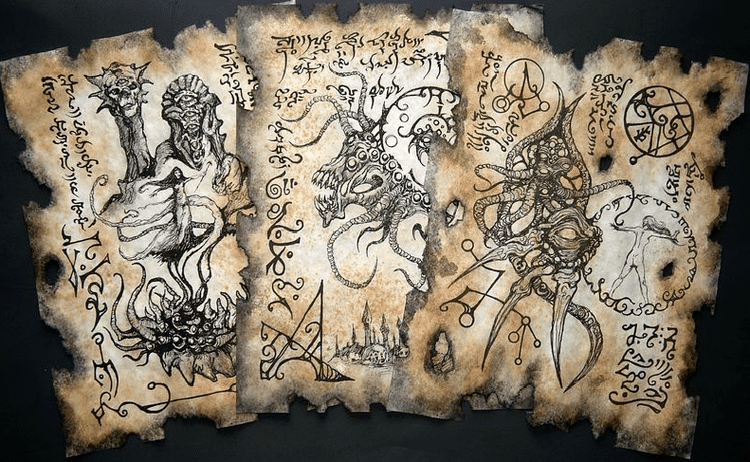
High on fire de vermis mysteriis full album
Creation
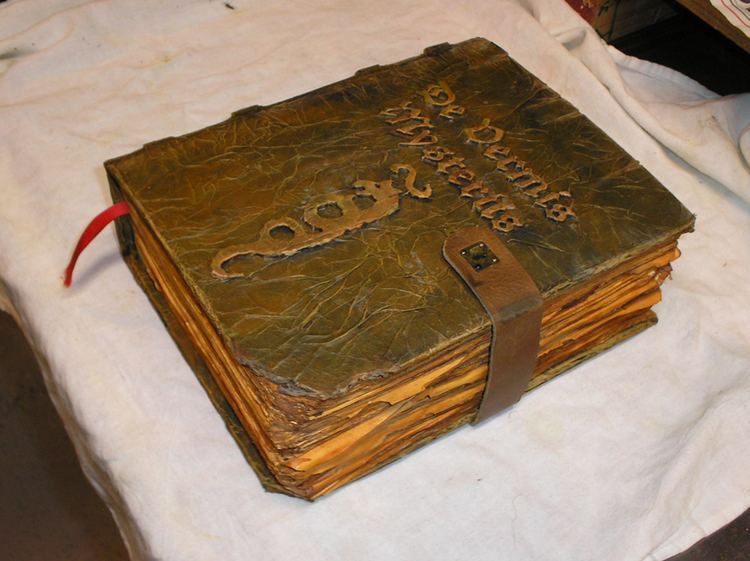
The tome first appeared in Bloch's short story "The Shambler from the Stars" (1935), in which a character reads a passage from the book and accidentally summons an extradimensional horror.
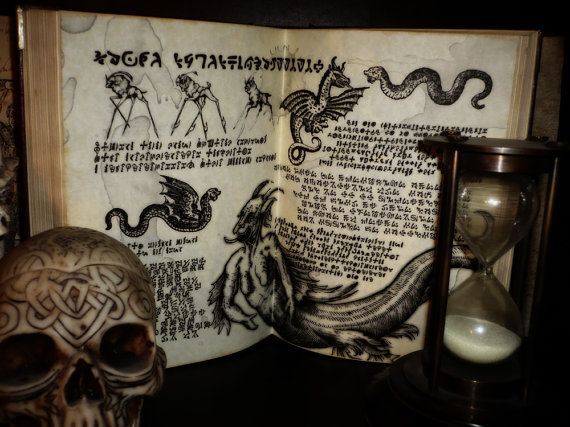
Bloch, then a teenager, corresponded with Lovecraft about the story prior to its publication, in part to get permission to kill off a character based on the older writer. While giving his enthusiastic blessing, Lovecraft also suggested that the book featured in the story, named by Bloch as Mysteries of the Worm, be referred to instead by the Latin equivalent De Vermis Mysteriis.
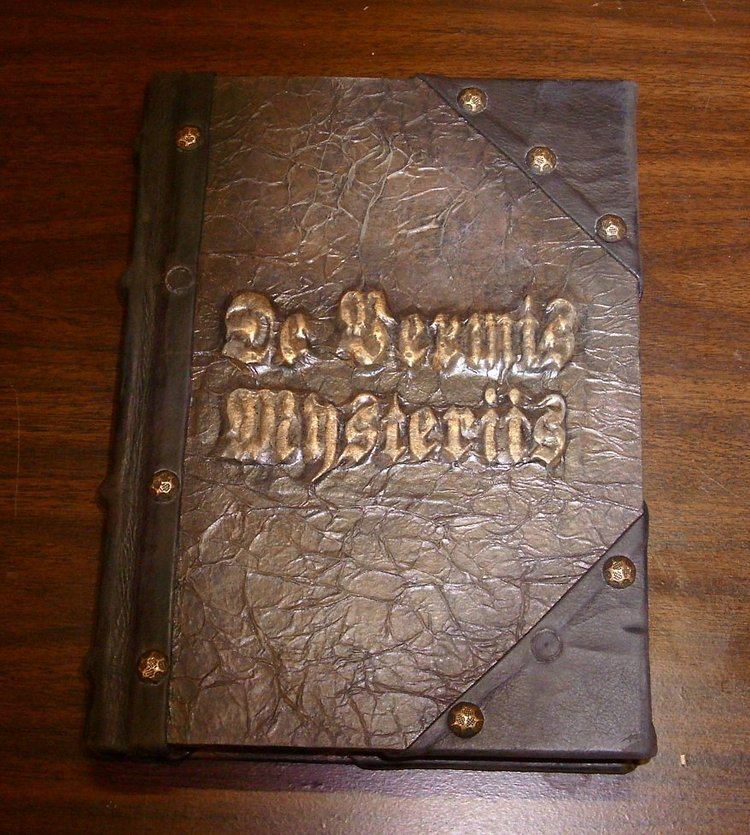
Lovecraft also provided Bloch with a bit of Latin to use as an invocation from the book: "Tibi, magnum Innominandum, signa stellarum nigrarum et bufoniformis Sadoquae sigillum"—which can be translated as "To you, the great Not-to-Be-Named, signs of the black stars, and the seal of the toad-shaped Tsathoggua".
Ludwig Prinn
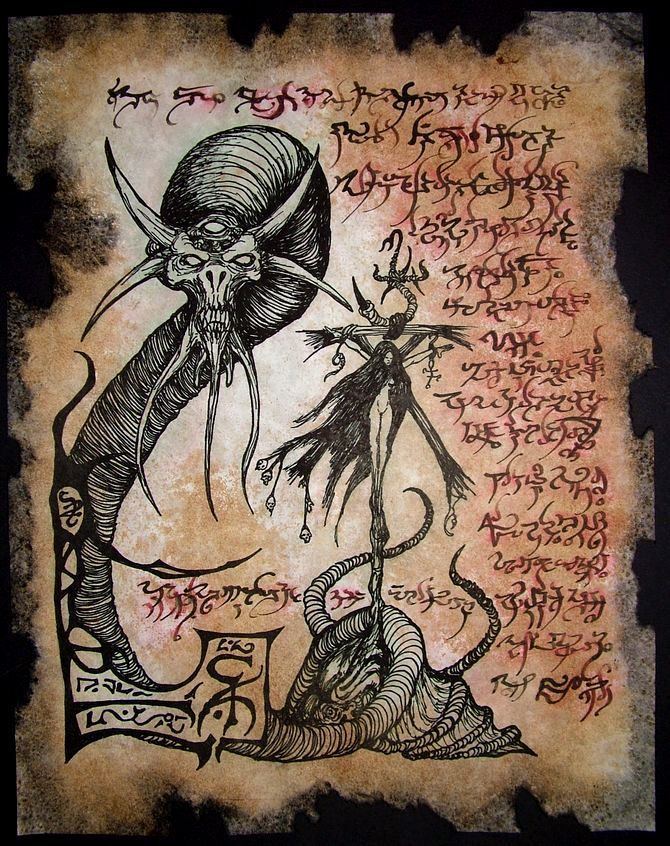
In "The Shambler from the Stars", De Vermis Mysteriis is described as the work of Ludwig Prinn, an "alchemist, necromancer, [and] reputed mage" who "boasted of having attained a miraculous age" before being burned at the stake in Brussels during the height of the witch trials (in the late 15th or early 16th centuries).

Prinn, Bloch writes, maintained that he was captured during the Ninth Crusade in 1271, and attributed his occult knowledge to studying under the "wizards and wonder-workers of Syria" during his captivity. Bloch also associates Prinn with Egypt, writing that "there are legends among the Libyan dervishes concerning the old seer's deeds in Alexandria."
At the time of his execution for sorcery, Bloch has Prinn living "in the ruins of a pre-Roman tomb that stood in the forest near Brussels...amidst a swarm of familiars and fearsomely invoked conjurations." In this forest, there were "old pagan altars that stood crumbling in certain of the darker glens"; these altars were found to have "fresh bloodstains" when Prinn was arrested.
Contents
In its first appearance, Bloch describes the book as containing "spells and enchantments", particularly those that can summon strange entities. One such spell, included in a "chapter dealing with familiars," summons the titular "shambler from the stars"—referred to in the Call of Cthulhu roleplaying game as a star vampire. The story also notes that that book contains references to "such gods of divination as Father Yig, dark Han, and serpent-bearded Byatis"—this last the first mention of a Cthulhoid entity later developed by Ramsey Campbell.
In a subsequent series of Cthulhu Mythos stories connected with Ancient Egypt, Bloch expanded on the contents of De Vermis Mysteriis. "The Faceless God" (1936) notes that Prinn "awesomely implies his knowledge" of Nyarlathotep, "the oldest god of all Egypt". In "The Brood of Bubastis", "The Secret of Sebek", and "Fane of the Black Pharaoh" (all published in 1937), Bloch refers to a chapter of Prinn's book called "Saracenic Rituals", which is said to have "revealed the lore of the efreet and the djinn, the secrets of the Assassin sects, the myths of Arabian ghoul-tales, the hidden practices of dervish cults" and "the legends of Inner Egypt". These stories use Prinn's chapter as a device to provide backstory on the cults of Bubastis and Sebek, and on the Pharaoh Nephren-Ka's worship of Nyarlathotep.
In later, non-Mythos horror stories, Bloch still occasionally made reference to his invented tome. Bloch's "The Sorcerer's Jewel" (1939) briefly mentions "Prinn's chapter on divination" as a potential source for information on "The Star of Sechmet", a mysterious crystal. The book plays a larger role in "Black Bargain" (1942), in which it is described as
something...that told you how you could compound aconite and belladonna and draw circles of phosphorescent fire on the floor when the stars were right. Something that spoke of melting tallow candles and blending them with corpse-fat, whispered of the uses to which animal sacrifices might be put. It spoke of meetings that could be arranged with various parties most people don't...even believe in...[with] cold deliberate directions for traffic with ancient evil...."Philtre Tip" (1961), quite literally a shaggy dog story, cites "Ludvig Prinn's Grimoire, in the English edition", as the source for the recipe for a love potion. Bloch quotes Prinn for the first time since "The Shambler from the Stars": "The meerest droppe, if placed in a posset of wine or sack, will transforme ye beloved into a veritable bitche in heate."
H. P. Lovecraft
Lovecraft, who enjoyed sprinkling references to his friends' fictional creations in his own Cthulhu Mythos efforts, repeatedly mentioned De Vermis Mysteriis in his stories. It appears in "The Haunter of the Dark" (written as a sequel to Bloch's "The Shambler from the Stars") as a "hellish" book found with other forbidden texts in the Starry Wisdom Church in Providence, Rhode Island. In "The Diary of Alonzo Typer", ghostwritten by Lovecraft for William Lumley, it is likewise part of an occult library in the van der Heyl house in Attica, New York. And in Lovecraft's "The Shadow Out of Time", the possessed protagonist Wingate Peaslee reads (and makes marginal notes in) a copy of the book possessed by the Miskatonic University library.
In a 1936 letter to fellow Mythos writer Henry Kuttner, Lovecraft mentioned De Vermis Mysteriis as one of the books that "repeat the most hellish secrets learnt by early man".
Later appearances
Robert M. Price has suggested that Kuttner, by giving the name "Abigail Prinn" to the villain of his short story "The Salem Horror", may have been suggesting that the Salem witch Abigail was a descendant of the Brussels sorcerer. In any case, Kuttner explicitly made use of De Vermis Mysteriis in his 1939 short story "The Invaders", in which disregard of the book's precautions ("the Pnakotic pentagon, the cabalistical signs of protection...") brings forth the horrors of the story's title—said to be described by Prinn as "the dwellers in the Hidden World".
In his short story "The Adventure of the Six Silver Spiders" (1950), August Derleth includes De Vermis Mysteriis among a group of Cthulhu Mythos volumes discovered in a book catalog by his detective character Solar Pons—though in the context of the story, all the books turn out to be fictional.
Both Ludwig Prinn and the De Vermis Mysteriis are mentioned by name in The Illuminatus! Trilogy (1975), as being connected to the Illuminati.
De Vermis Mysteriis is featured in a Lovecraftian story by horror writer Stephen King entitled "Jerusalem's Lot" (1978)—part of the Night Shift collection, wherein the main character, Charles, touches the book and releases a gigantic white worm, which was worshiped by the town's previous inhabitants. It is also implied that book is found by Mark and Susan in the novel/semi-sequel 'Salem's Lot. In a passage, Mark finds a book in the Marsten House and asks Susan to translate it for him. She doesn't know what it says, but she says it's in Latin, possibly referencing the book's title. The book is also referenced in Revival by Stephen King where it is used by the antagonist to heal people and achieve his ultimate goal.
De Vermis Mysteriis also appears in the novel The Keep (1981) by F. Paul Wilson.
In Price's own "Wilbur Whateley Waiting" (1987), a character declares himself to be a descendant of both Ludvig and Abigail Prinn.
Prinn and his book both appear in Brian Lumley's 1987 novella "Lord of the Worms".
De Vermis Mysteriis appears in the 1992 video game Alone in the Dark. Unless the player character is standing on a pentagram tile, reading it will result in instant death; an additional warning, in Latin, is prepended to the original text in reference to this: "In nomine invocatoris, si non sanctificatus es, cave."
In Kim Newman's short story "The Gyspies in the Wood" (2005), Charles Beauregard, an agent of the Diogenes Club, mentions that he owns a copy of the book.
In Dracula 3: The Path of the Dragon a copy of the De Vermis Mysteriis can be found while looking at the many books in library sections located at the back of Irina Boczow's office after returning to Budapest for the second time.
"De Vermis Mysteriis" is a song by Industrial Music act Flint Glass.
In the visual novel/anime/manga series Demonbane, De Vermis Mysteriis appears as the grimoire possessed by the lich-like sorcerer Tiberius.
The post-industrial Seattle-based band Rabbit Junk prominently feature the Lovecraftian Latin incantation in the song "Revenge of Julian Modely" to be found in their Project Nonagon album.
The book appears in Tales of the Teenage Mutant Ninja Turtles Volume Two #30 "Circle of Darkness".
There is a reference to 'De Vermis Mysteriis' in the 2004 movie, Hellboy. It contains a description of the Ogdru Jahad, gods otherwise not connected to the Cthulhu mythos. A quote from the 87th page appears saying; "In the coldest regions of space, the monstrous entities Ogdru Jahad - the Seven Gods of Chaos - slumber in their crystal prison, waiting to reclaim Earth... and burn the heavens."
"De Vermis Mysteriis" is the title of the 2012 concept album by High on Fire.
The book is mentioned in the Doctor Who novel White Darkness.
The book is mentioned in the 2015 Shona horror novel, Shavi Rechikadzi, by Masimba Musodza, tracing a copy that found its way to Zimbabwe through a lieutenant of Swahili slave trader, Tippu Tip and survivor of the Congo Arab War, Mwalimu Jimmu.
